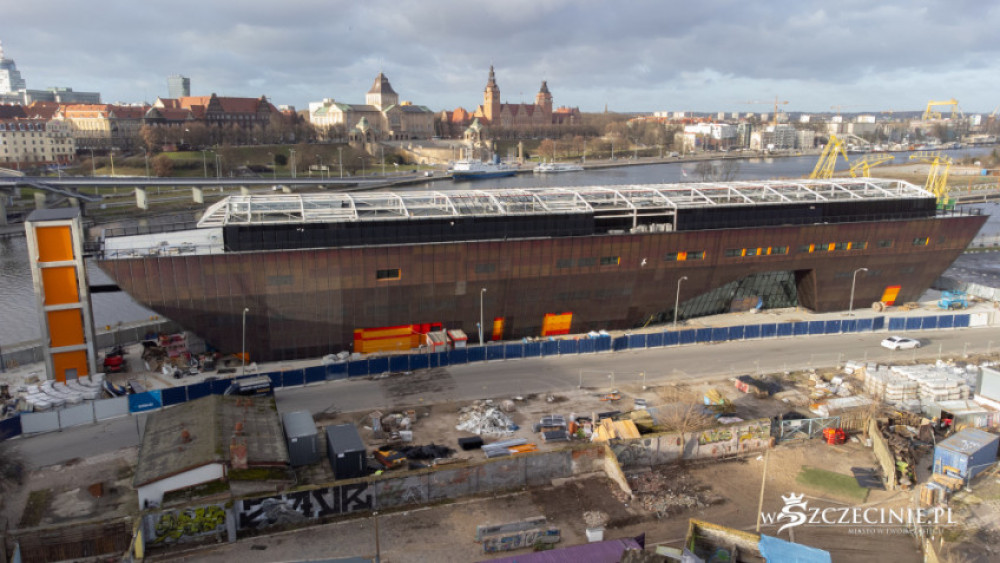Find a pirate ship, climb the yards, cross the mast ten meters or so above the ground and save the ship from sinking – visitors to the Marine Science Center will have plenty of opportunities to test their skills and feel like real sea wolves. Dozens of exhibits are ready, which will create the largest exhibition in Western Pomerania.
Exhibits for the Marine Science Center Szczecin Jerzy Stelmach prepares the Trias Avi. Let us remember that the offer of the Warsaw company turned out to be better than the offer of the Turkish consortium Polin Dis Ticaret Anonim Sirketi and Orucoglu Holding Anonim Sirketi.
Exhibition “Real Challenge”
The three-story exhibition will consist of five thematic blocks – “Full speed is ahead!” , “Slap!” , “Life at sea”, “Element of the sea”, “Any way to Africa”. In total, it is more than 200 exhibits.
The design, creativity and proper arrangement of the many exhibits is a real challenge. For both the design and implementation team – confirms Jacob Zimo, Technical Director at Trias Avi. – The total number of them makes the permanent exhibition of the Marine Science Center the largest in the entire West Pomeranian Voivodeship.
Play the roles of diver, sailor and sea cook
Final exhibits are presented successively on the social features of the Marine Science Center. Among the newest there is, among others, the yellow bathtub. The inspiration for its construction was the Polish “Meduza” from 1967, and its creator and designer Anthony Dubsky. The chamber was used by divers to conduct research on shipwrecks located at the bottom of the Baltic Sea.
– Thanks to this exhibition, visitors to the Marine Science Center will be able to feel the atmosphere of the diving room. Our replica is equipped with instrument panels and a periscope – adds Jakub Szymuś.
Another facility called “Be a Diver”. It consists of a column filled with water and a system for generating a vacuum. The exhibition simulates the impression that they are dressed as a deep-sea diver at great depth.
The visitor puts his head in a helmet and his hands in gloves. He has simple tasks to do. Then he discovers how difficult it is to perform simple manual tasks in great depth, explains Trias Avi Artistic Director.
“For complete authenticity”
Interestingly, the materials used for shipping were used on a daily basis for many of the exhibits. This procedure is intended to maintain “full reliability”. At the same time, Jakub Szymuś stresses that the MCN Gallery will be created by “almost unique objects”. Among them there is, among others “Caboose”. It is “a space faithfully reproduced on a utensil intended for food preparation”.
“Caboose” will allow you to feel how difficult it is to cook on constantly moving surfaces – explains J. Szymuś. – On the other hand, “Roaming Along the Ground” will allow you to walk across the mast several meters above the ground. Of course, while respecting all safety rules – confirms.
MCN visitors will also see how to sail upwind and have the opportunity to try their hand at making a rescue knot.
– However, a very interesting section “Chlap!” It will allow you to experiential learning about the complex issues related to hydraulic engineering. He will also explain the behavior of electric current on the example of water flow – declares J. Szymuś.
The heart of the gallery is to be a gallery consisting of interactive exhibits that enable experiments to be carried out independently.
Subject to strict evaluation
In January, the specialists of the Marine Science Center visited the workshops of the companies Rama and Signum, which are involved in the production of the exhibits. During the meeting, they considered the various stages of manufacturing things – from design to the final version. As Jakub Szymuś assures, “Before assembly, the exhibits undergo rigorous evaluation by engineers.”
– The acceptance process itself depends primarily on the assessment of compliance with the design and the quality of workmanship – he adds.
The exhibits have been delivered to the Marine Science Center since September 2021. Dozens of objects have already been collected. It is worth noting that an outdoor gallery will also be created next to the anthracite-covered building. It will be a marine playground with an area of about 50 square metres.
Construction of the Marine Science Center is nearing completion – construction is due to be completed in less than a month. However, in March, the assembly of the basic exhibition will begin.

“Music specialist. Pop culture trailblazer. Problem solver. Internet advocate.”







